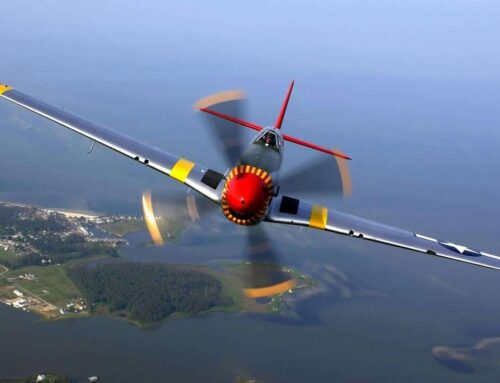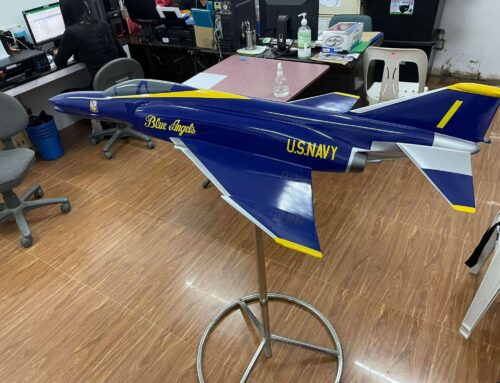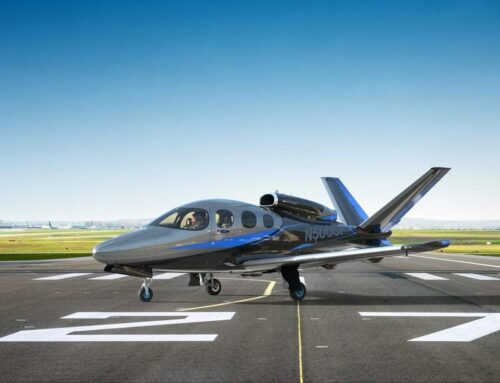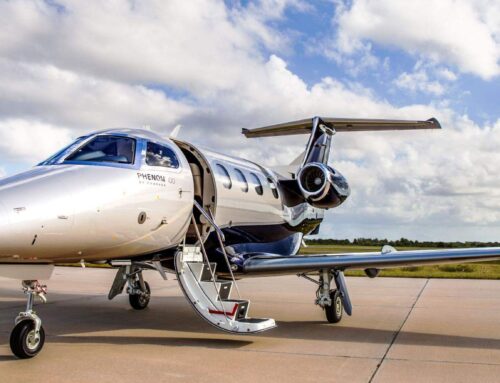Modelworks Fabricates Handmade Aircraft Models Built From Scratch.
The build cost of one-of-a-kind handcrafted models is very different from those models that are mass-produced in the thousands.
First of all, the major difference is Engineering and Tooling. China is the top fabricator of mass-produced models. Once the Tooling is established, the cost of the models is only $25 to $75 per unit. The build cost for a custom handmade model is $250 to $450 for a single airplane model. You’re probably wondering… What is the catch?
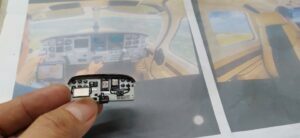
Cockpit Controls
The $25-$75 requires a Tooling cost. For the sake of this article, let’s fix the Mass-produced build cost to $50 in order to simplify the numbers. In order for Chinese model companies to commit to a $50 diecast model, their customer must be willing to purchase at least 1000 to 2000 model units. this computes to 2000 x $50 = $100,000. At this point, I have not mentioned the Tooling and Engineering cost. The T/E cost involves Cad Engineering, 3D Printing, Casting and fabrication. The creation of molds and detailing of parts to make up the model cost between $30,000 to $60,000. Take a look at the cost breakdown below:
MASS PRODUCED DIECAST AIRCRAFT MODELS
Tooling and Engineering Cost: $50,000
Minimum Order: 2000 units @$50 each = $100,000
Fedex Shipping cost: $20 to $30 each = $10,000 – $20,000
TOTAL: $170,000
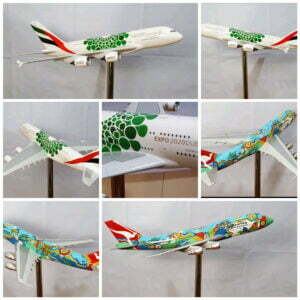
HANDMADE AIRCRAFT MODELS
1 Medium Custom Fabricated Airplane Model $250 – $350
Minimum Order: 1
Fedex Shipping: $85
TOTAL: $335 – $435
COMPARISON
While the unit cost of a Mass-Produced Model is more affordable, there are zero customization options.
A consumer can only buy from the available inventory at Walmart, Amazon, eBay, or whatever inventory the shop has.
The typical options are Color and Graphics.
On the other hand, Custom Models can be fabricated in any size, configuration, detail, and thousands of unlimited options. Although the benefits are obvious, the difference is the tradeoff and value of the consumer. The important question a consumer has to answer is whether the extra cost is worth the value of matching paint, matching graphics, details, markings, lettering, leather upholstery, gages, instrument cluster, and even matching specifications.
HANDCRAFTED MODELS
Custom Exhibit models are fabricated by hand and built-in in 3 phases.
These 4 phases consist of the Carving stage, Putty, Painting, and Rigging.
In order to understand what happens during each part of the build, we have listed the sections below:
CARVING STAGE
The Carving phase involves using blueprints or photos to shape the overall form of the Aircraft Model. The wings, fuselage, Vertical stabilizer, and components are fabricated separately. Once the individual components are fabricated, they are assembled together and the proper fitment is made. The dimensions, proportions, and measurements are checked to ensure accuracy.
PUTTY STAGE
Once the Carving stage is finished and the overall shape and proportions of the Airplane model have been properly inspected by a Master Model Expert, the model is applied with a Grayish paint to seal and fill the small imperfections in the gaps, joints, and surface of the aircraft model. Deeper scratches or chips are applied with a thicker grade of paste or putty. The Putty phase is complete when the surface is smooth and ready for paint.
PAINTING STAGE
The 4th stage is the painting stage of the Custom Model process. One would think this is the last step. However, there are two following steps after completing the paint and artwork. Much of the painting involves airbrush techniques, artwork, and graphics. Some graphics are created manually while others require the use of photoshop and adhesive stickers. The best results happen when a mix of the two techniques is used.
RIGGING STAGE
The intricate detailing and meticulous fabrication happen during the Rigging phase. The tiny accessories are added after the paintwork is complete. The tiny trim is installed after the paint due to the sensitivity of the trim details. Some of the trim details added to Aircraft models are pitot tubes, Antennas, Leds, landing gear, missiles, fuel tanks, and more.
CLEARCOAT
Once the model has been approved by the customer, the clearcoat is applied over the paint, adhesives, graphics, and accessories. The final coal will provide a layer of protection to protect the paint and overall surfaces of the model. Most clear coats will provide a shiny surface. When Military Aircraft are finished, they are applied with a satin finish or flat colored paint during the base coat.
CONCLUSION
The decision to purchase your model from a hobby shop is a difference of $100 to $300. That’s a difference of $200. Consumers that are on a fixed budget will prefer to buy their custom Airplane model online. If a consumer is seeking a generic Boeing 737 max from United Airlines or Airbus Aircraft Model, it won’t be so difficult to find a Generic Aircraft.
Business handmade Aircraft Models, Private handmade Aircraft Models, and Military handmade Aircraft Models are where Handmade Aircraft Models Fabricators shine. It is virtually impossible to find a Cessna Aircraft 172 with matching color and artwork for your aircraft. If your aircraft is Yellow with green stripes, Modelworks can match the color and design of your actual Cessna. Military Handmade Aircraft Models can be detailed with the exact unit markings and munition payload. At the end of the day, you have to ask yourself whether the extra $200-$300 is worth the extra money.
